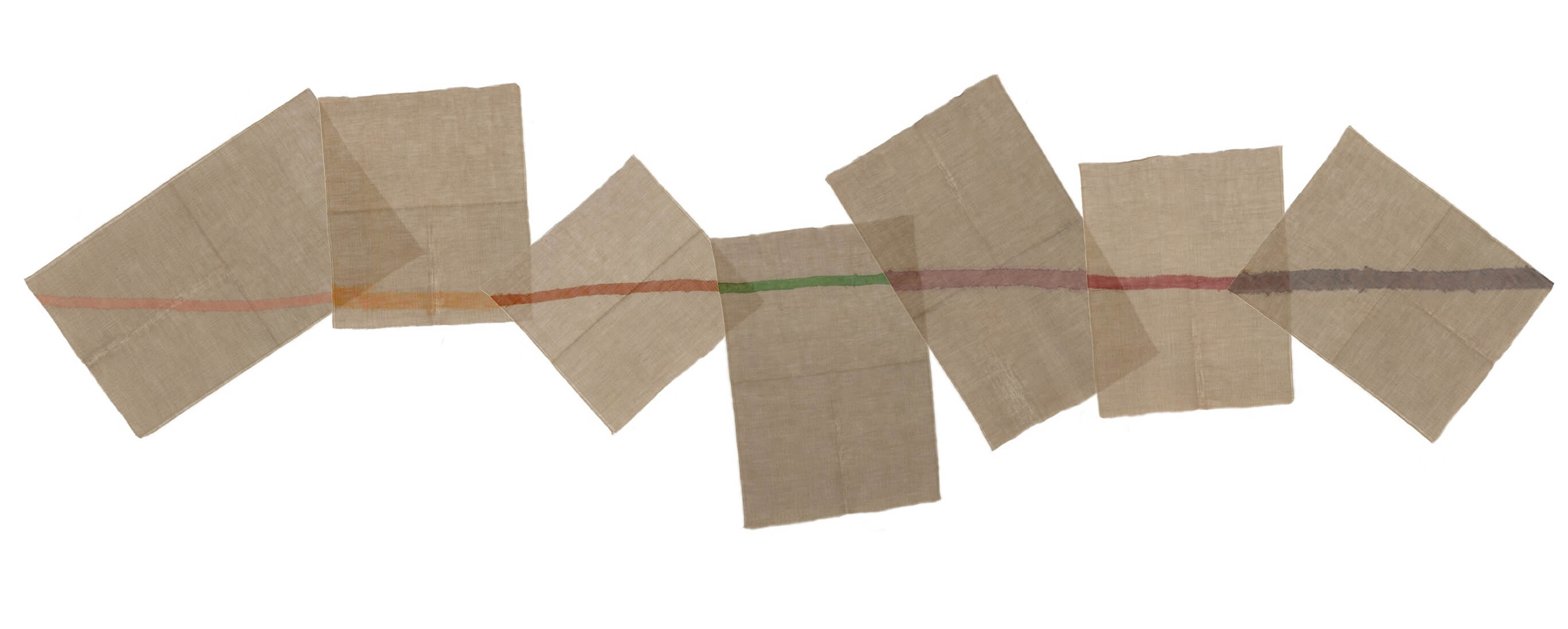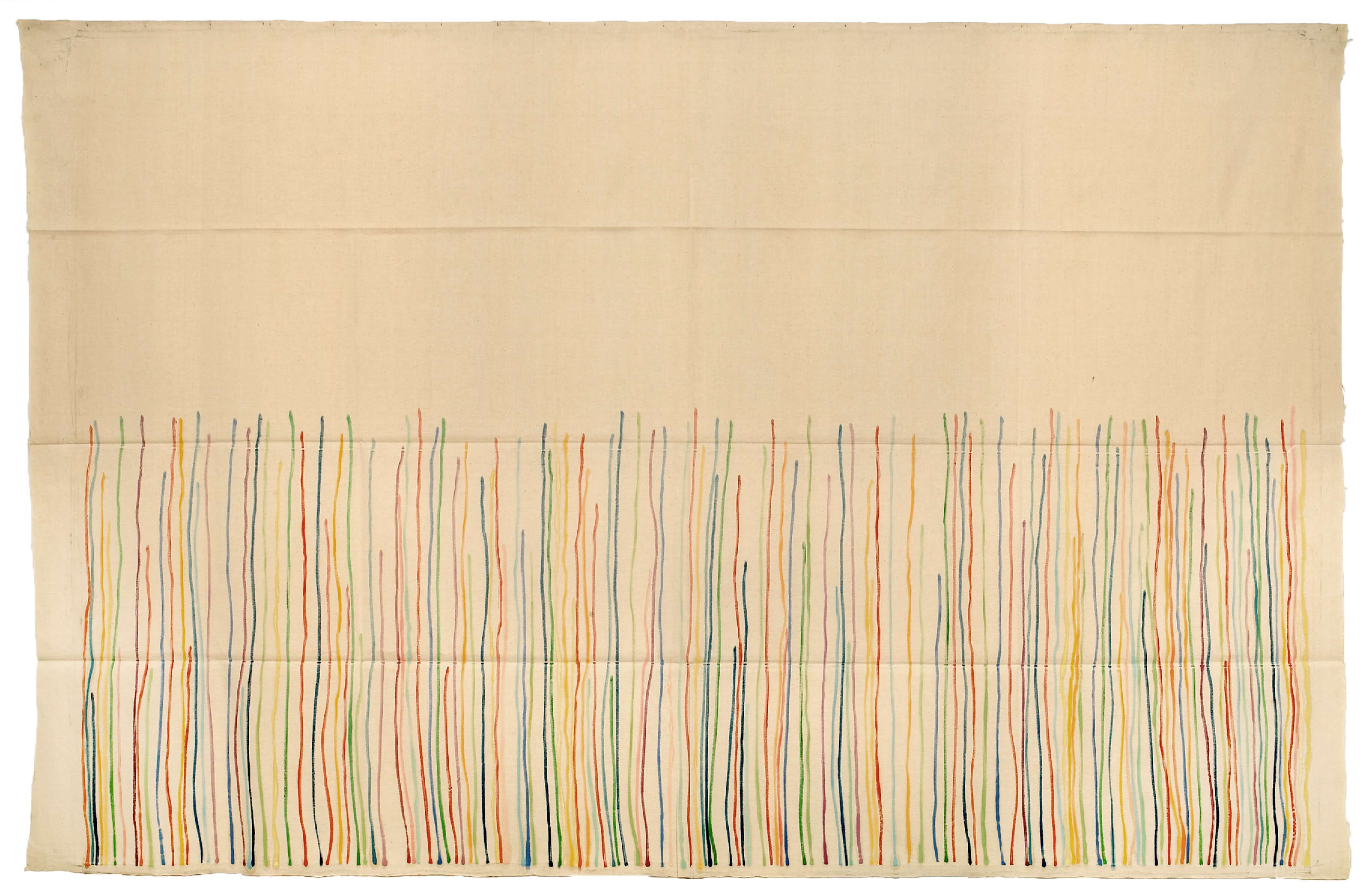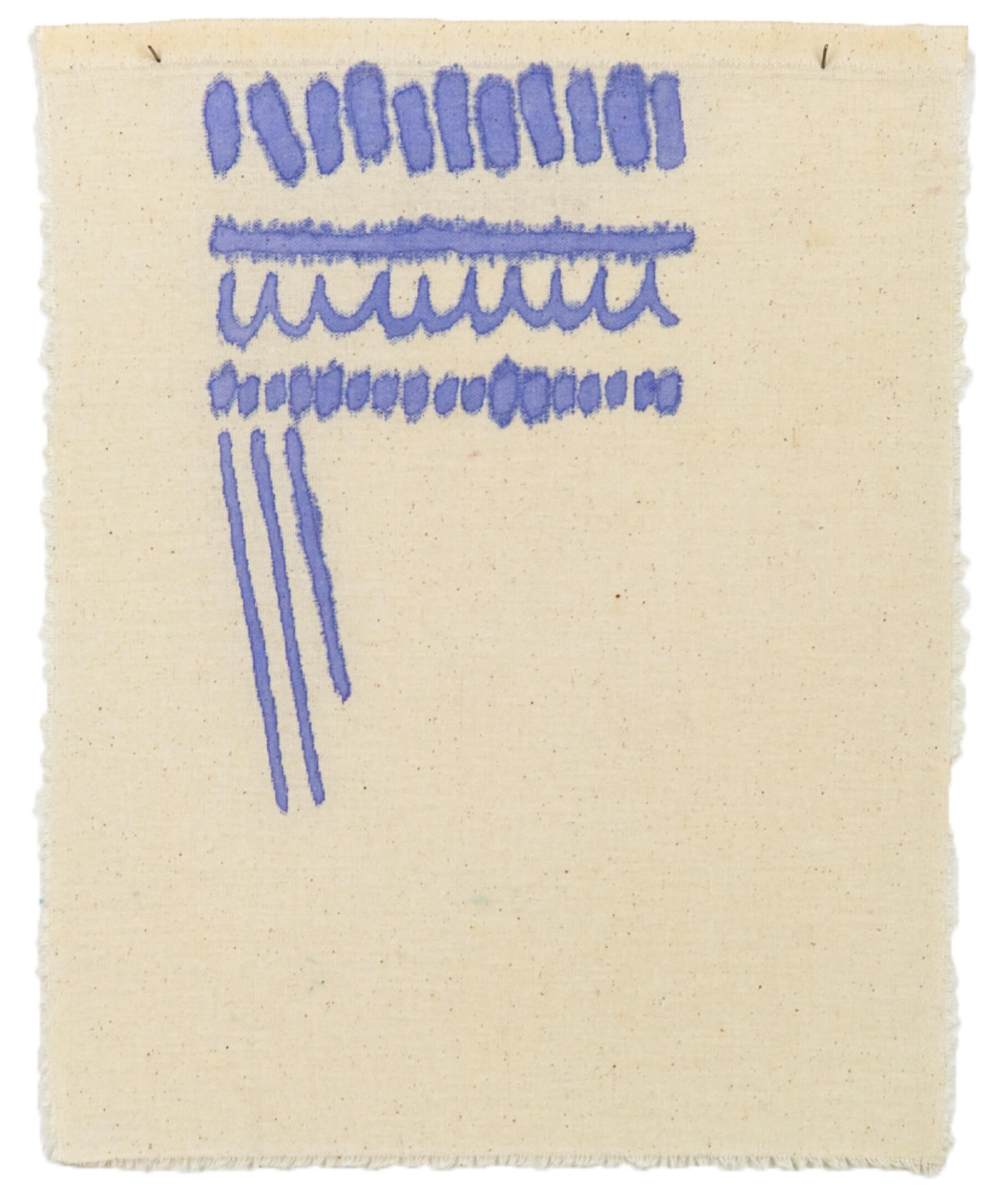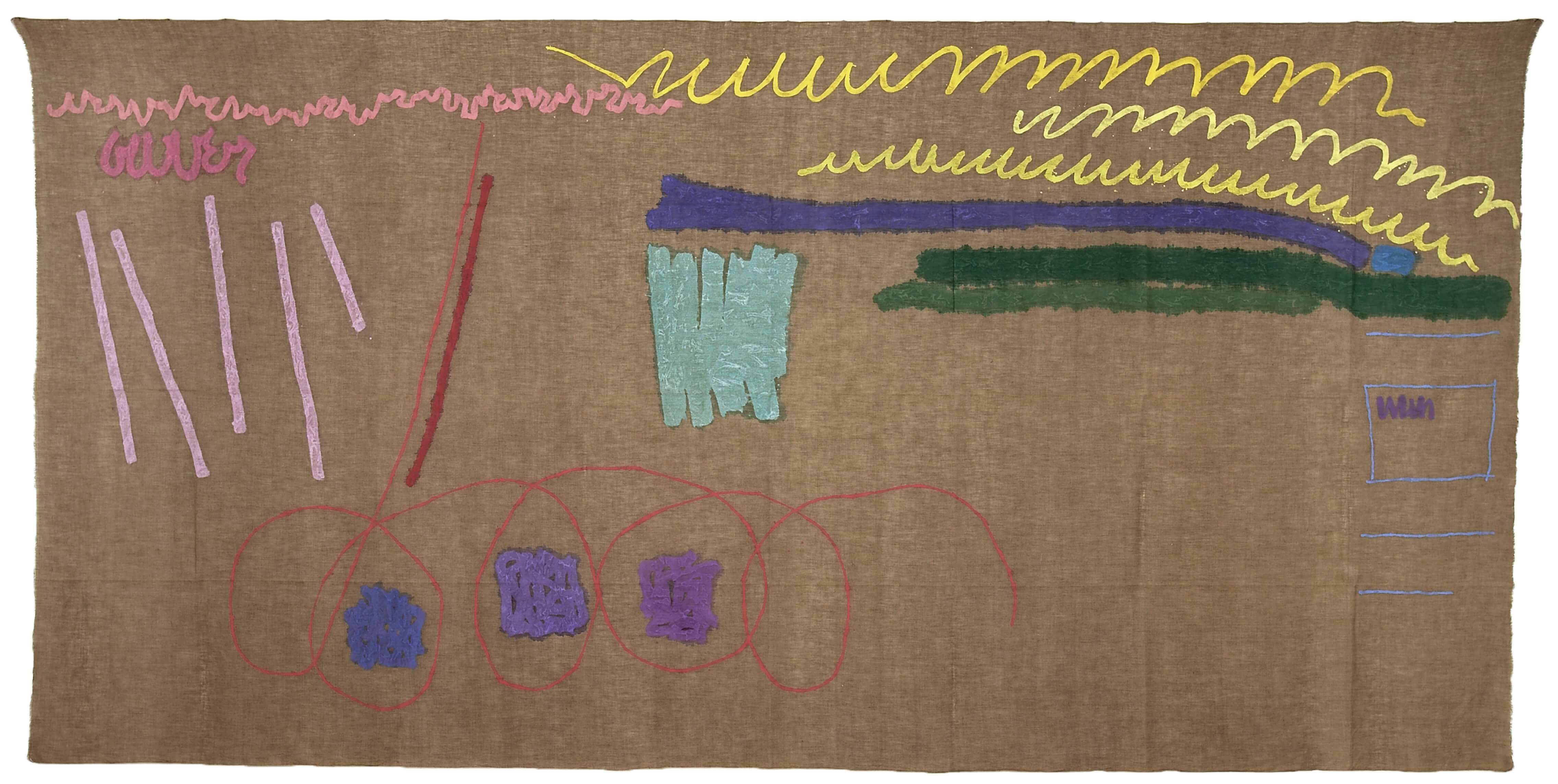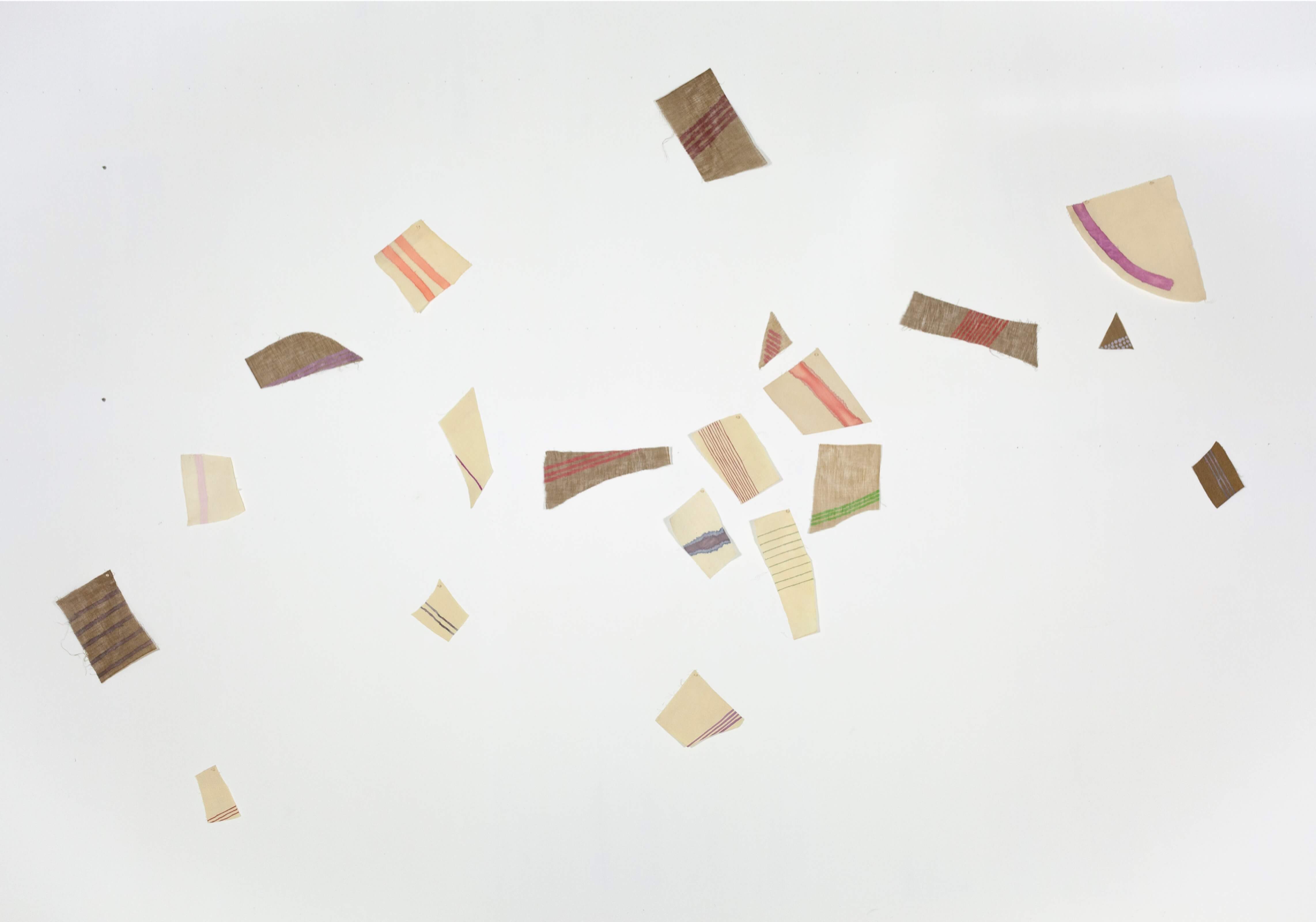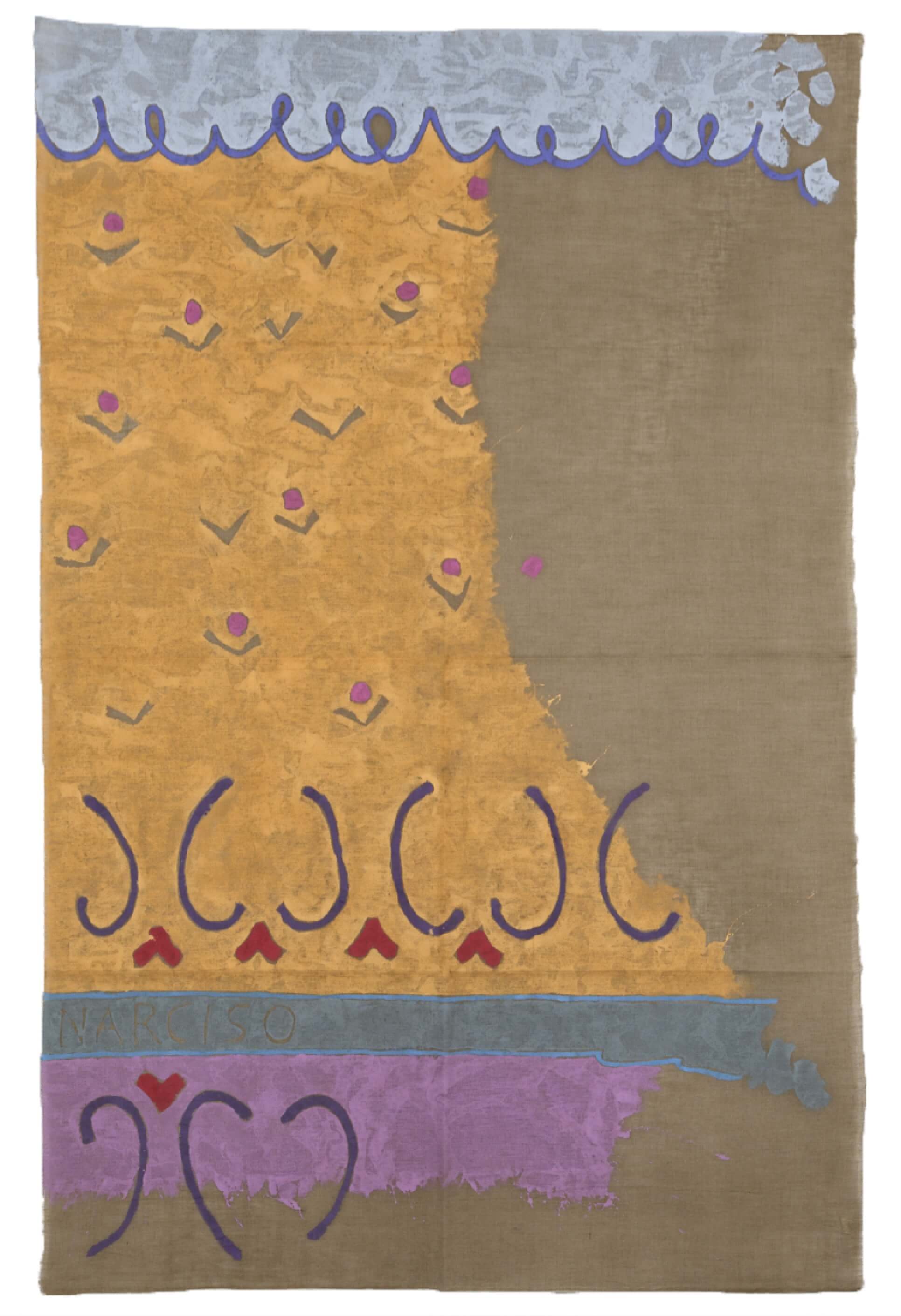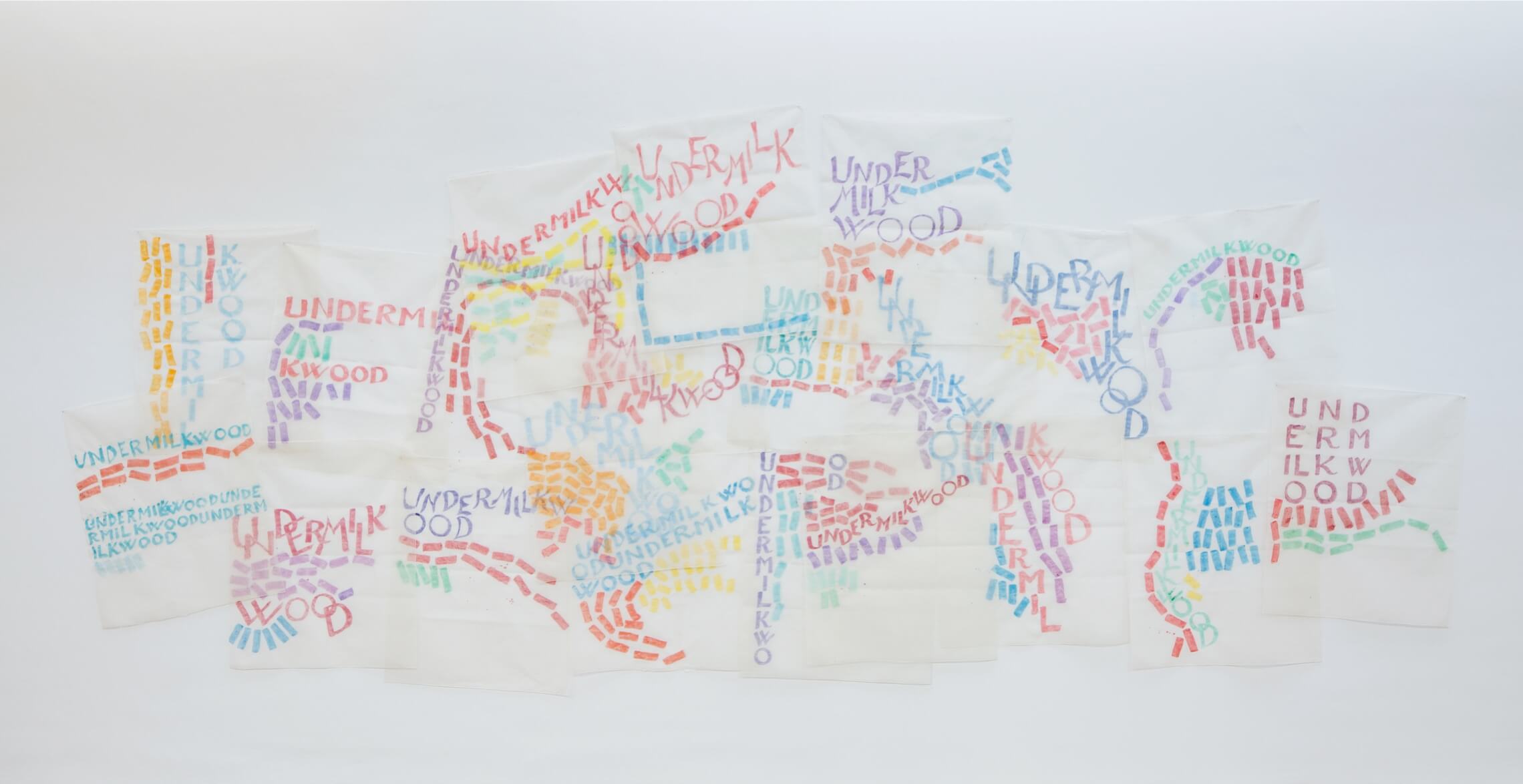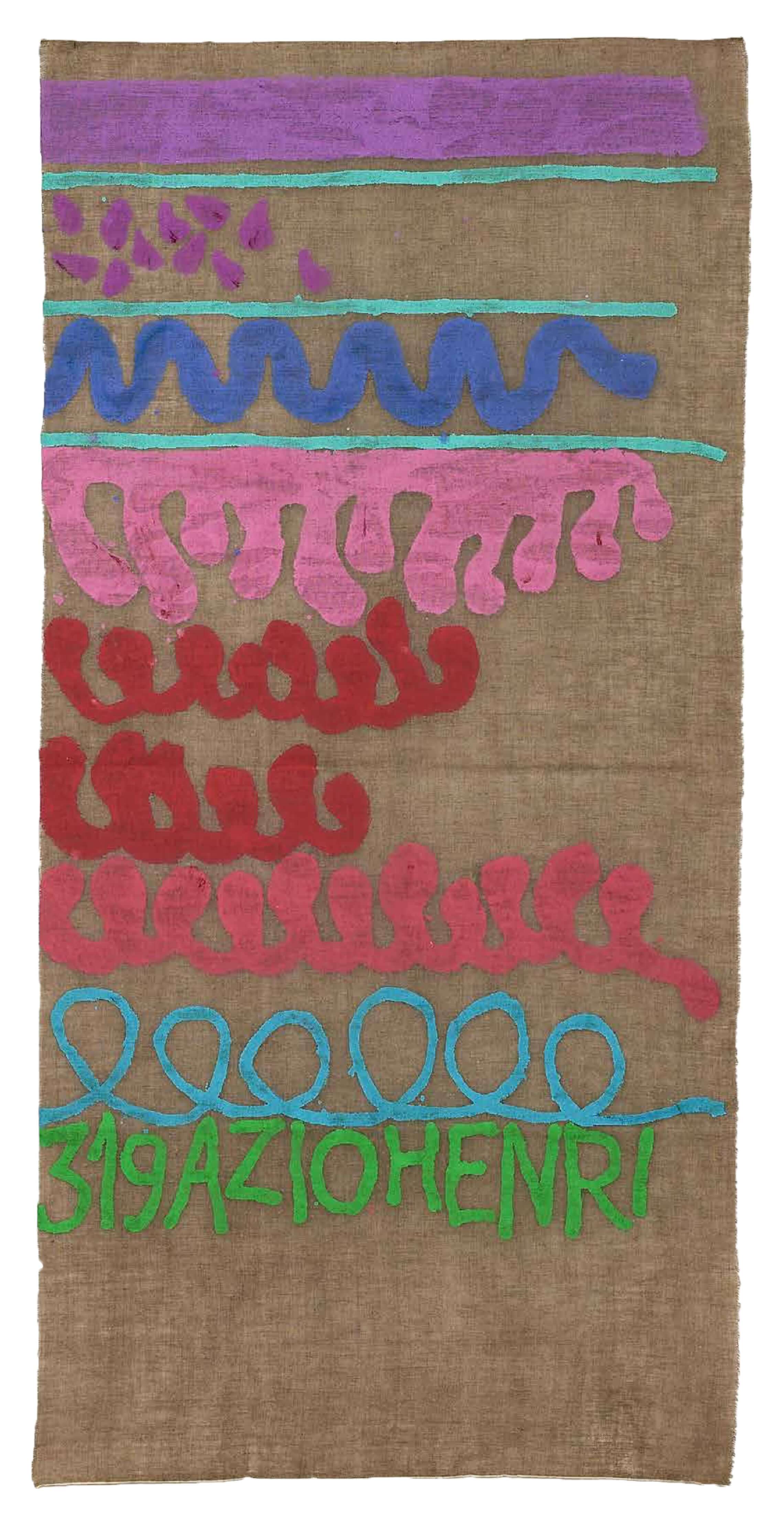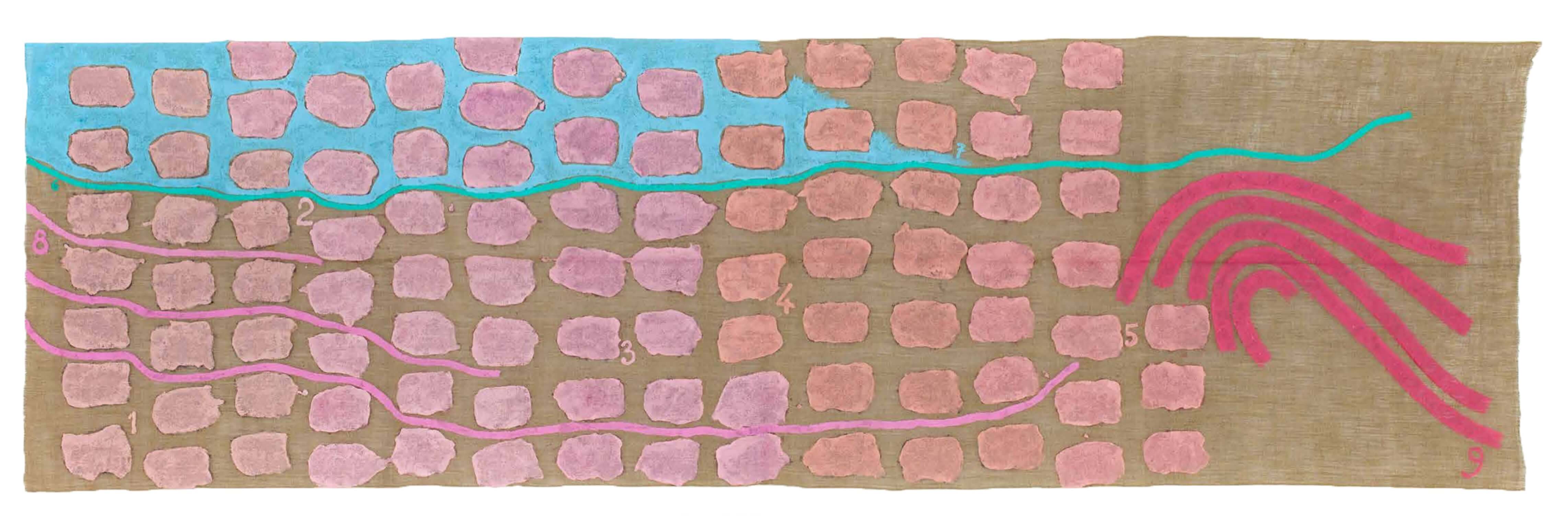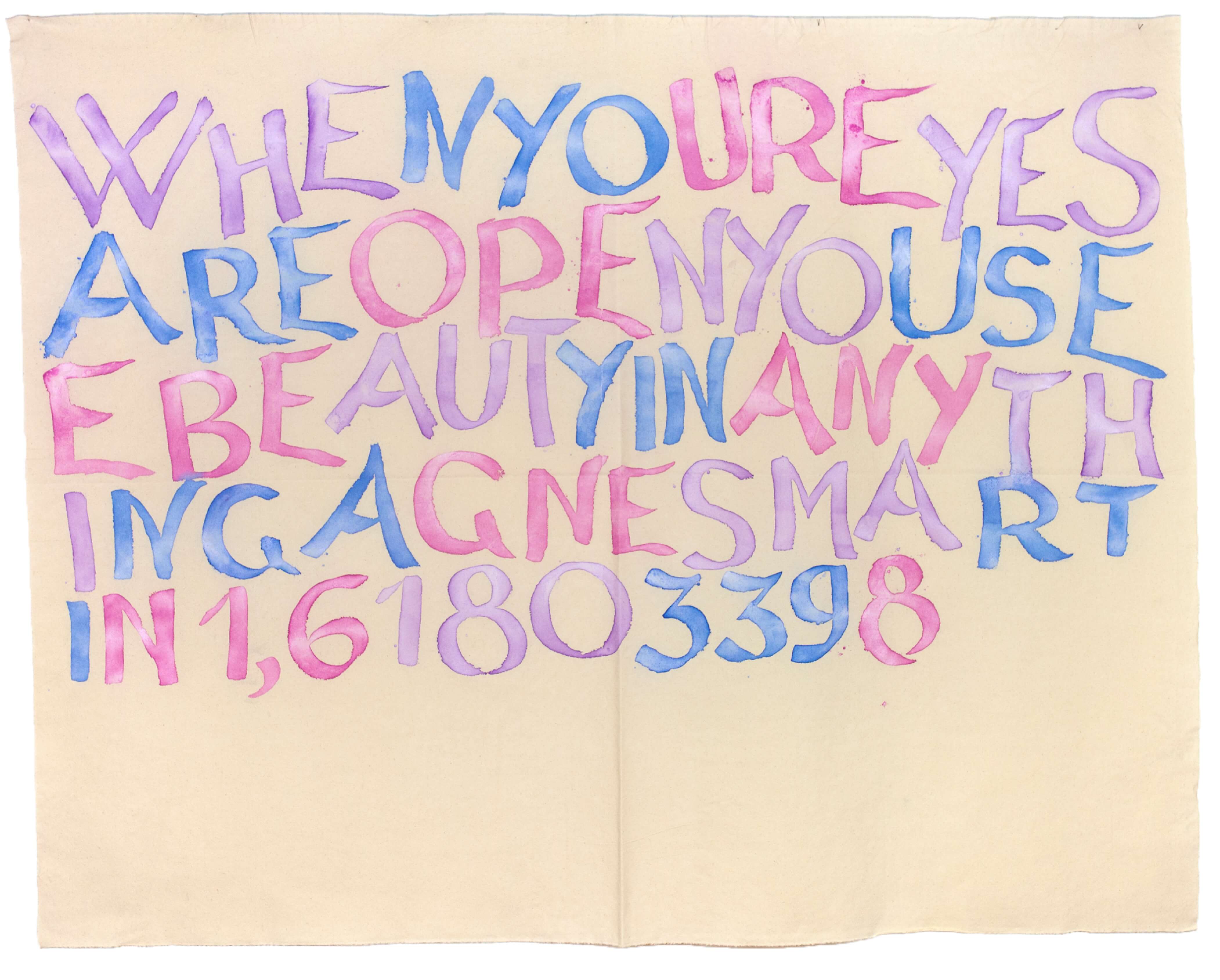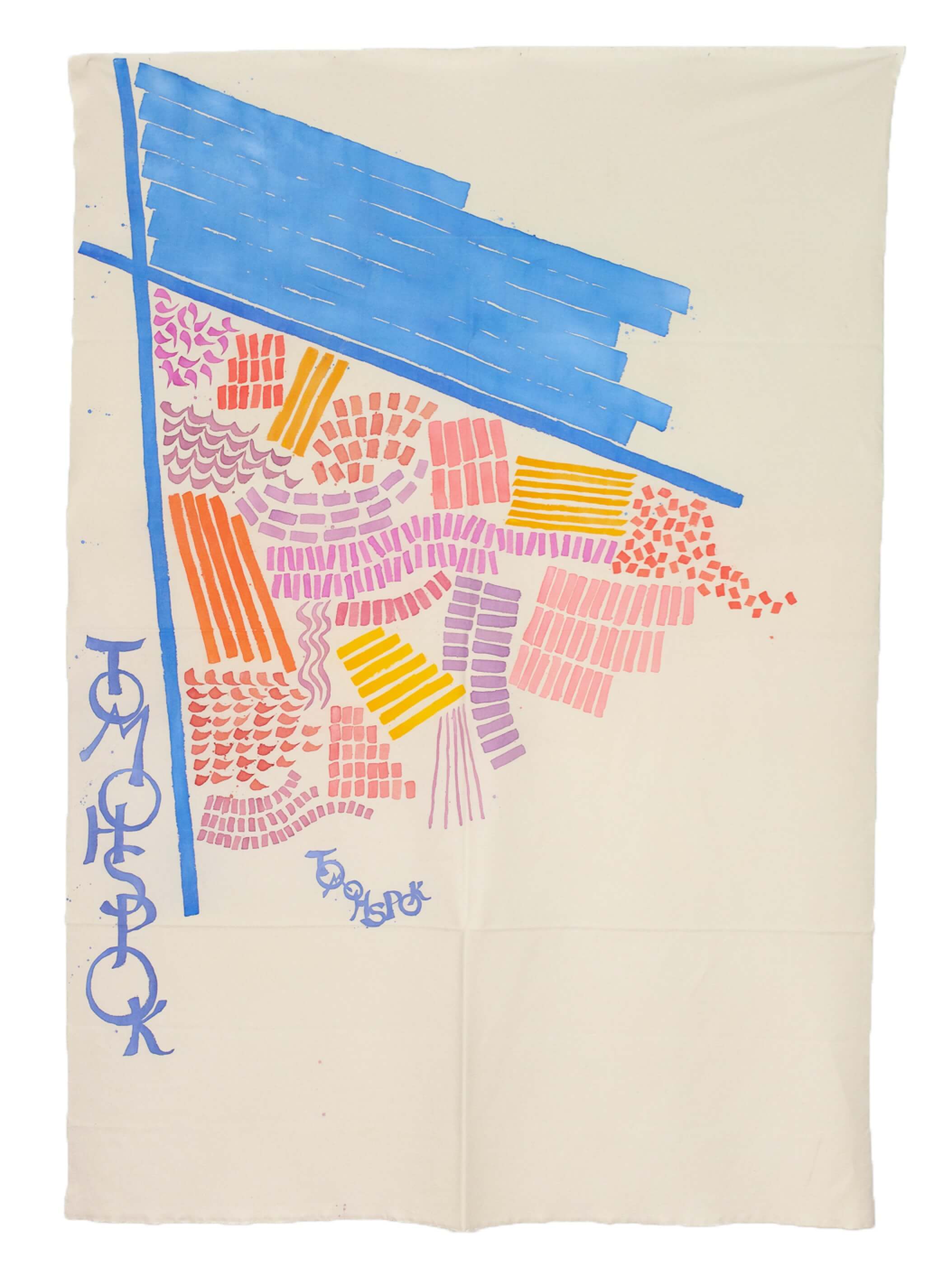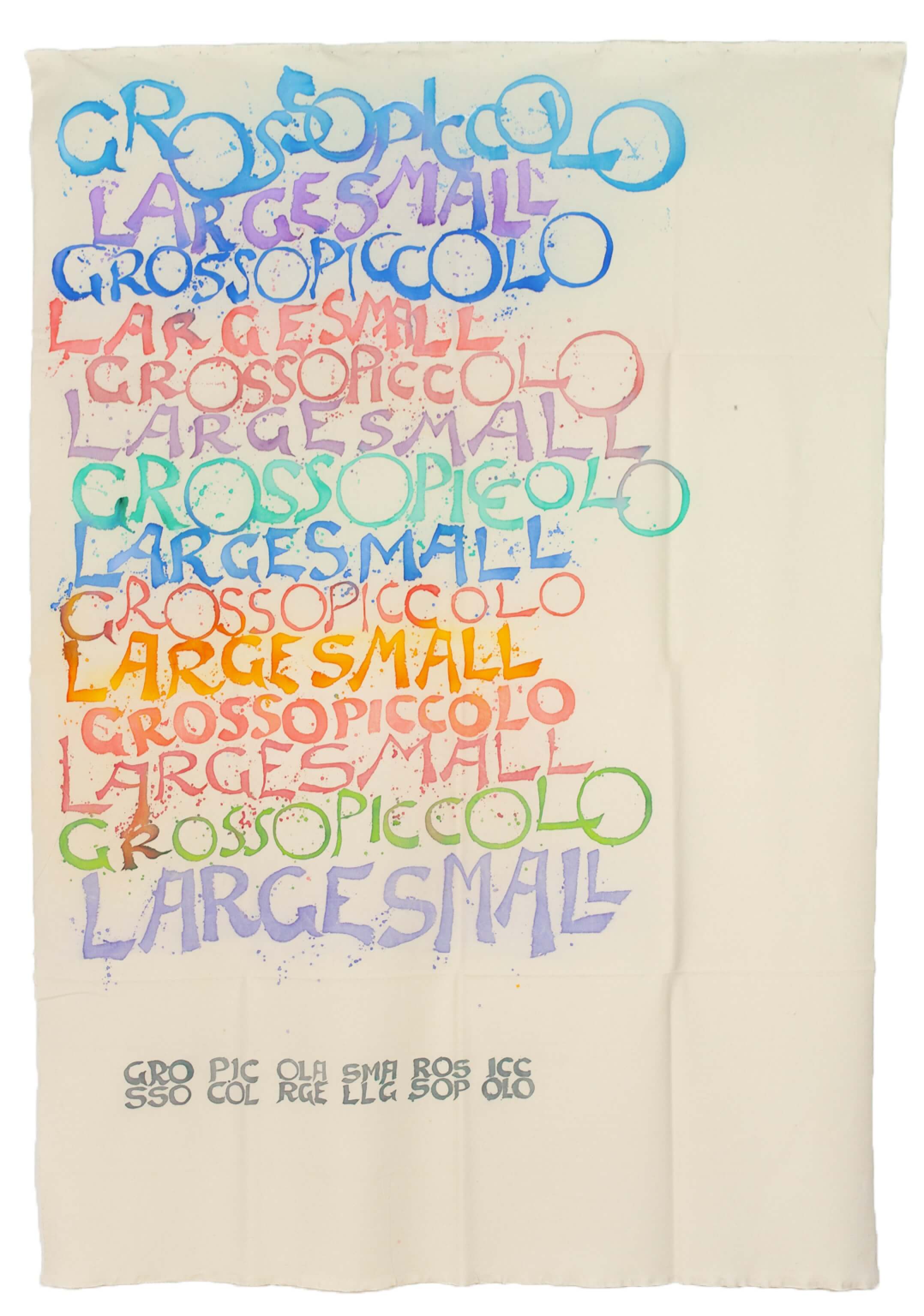Works
Giorgio Griffa mainly paints with water-based acrylic colours on unprimed and unstretched canvas. His canvases are then fixed directly to the wall with a series of small nails along the top edge. When not on display, his works are folded and piled up. In line with the idea that painting is an unfinished constant, a lot of his works display a deliberate point of suspension which has been described as if ‘he were stopping a thought midsentence’.



